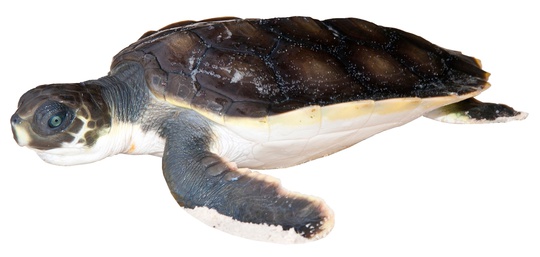Flatback turtle
Natator depressus

(Image credit: David Harasti)
Names for its flat shell with upturned edges. The carapace is olive green to grey and the flippers and head are grey. Underneath they are a creamy yellow colour. The soft skin covering the carapace is easily damaged and can show the scars of mating or collisions with boats. Hatchlings share the adult’s counter shading and have a white border to the carapace and black outlines around each scute (bony external plate on the shell).
Length: Carapace up to 90 cm
Habitat
Flatbacks prefer subtidal coastal waters away from reefs. They feed mainly in shallow, murky bays inshore of the outer Great Barrier Reef, and similar habitats around northern Australia; 0-44 m depth
Log it
Turtle distribution and movement patterns are not well know, so please log this species wherever it is spotted in New South Wales, Victoria, Tasmanian, South Australia and southern Western Australian waters
Related links/info
Species names on the Redmap site are based on the Codes for Australian Aquatic Biota or CAAB (http://www.cmar.csiro.au/caab/). This is updated regularly and lists the approved common name, family, species name and more.
Redmap species descriptions were based, with permission, on the following resources:
Australian Marine Life: The Plants and Animals of Temperate Waters by G. J. Edgar, Revised Ed. (2008) Reed Books, Melbourne
Fishes of Australia’s Southern Coast, Edited by M. Gomon. D. Bray and R. Kuiter (2008) Reed Books, Melbourne
Find further information and images at FISHES OF AUSTRALIA http://www.fishesofaustralia.net.au/











